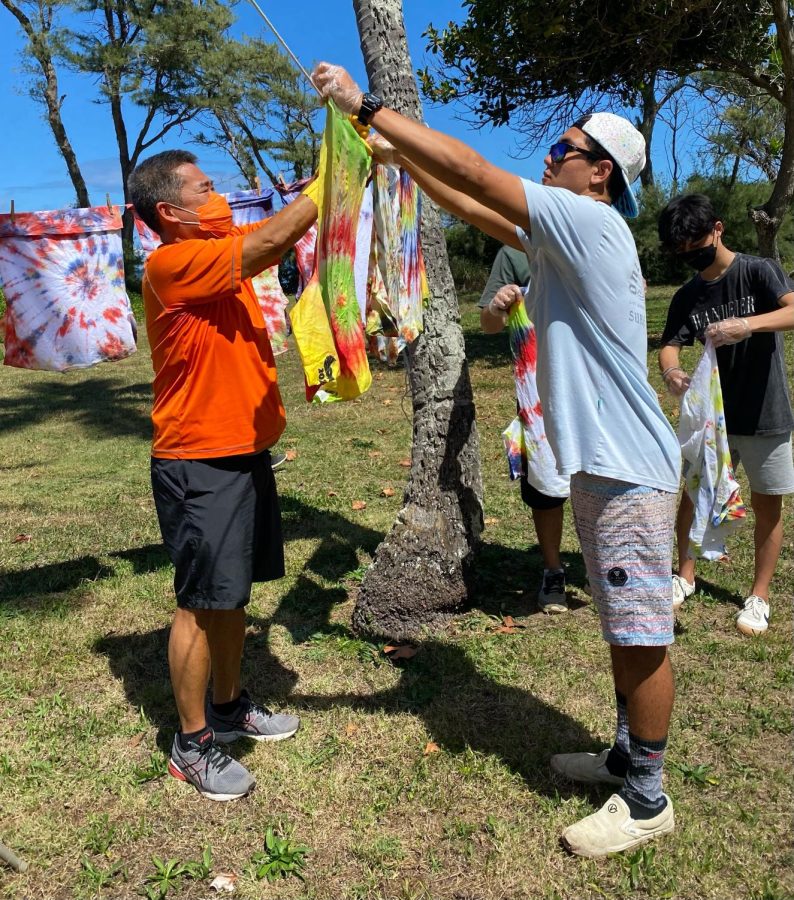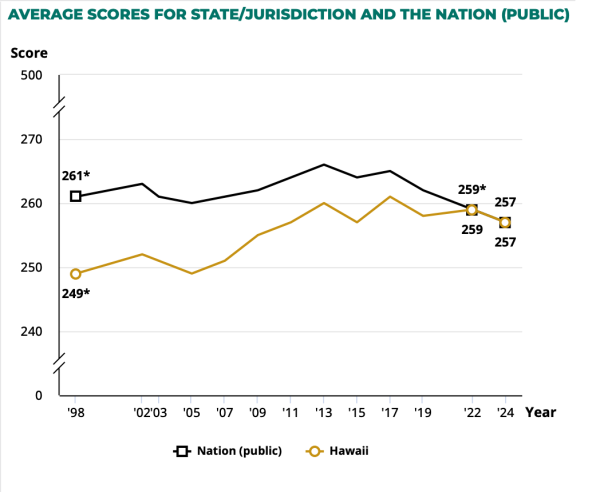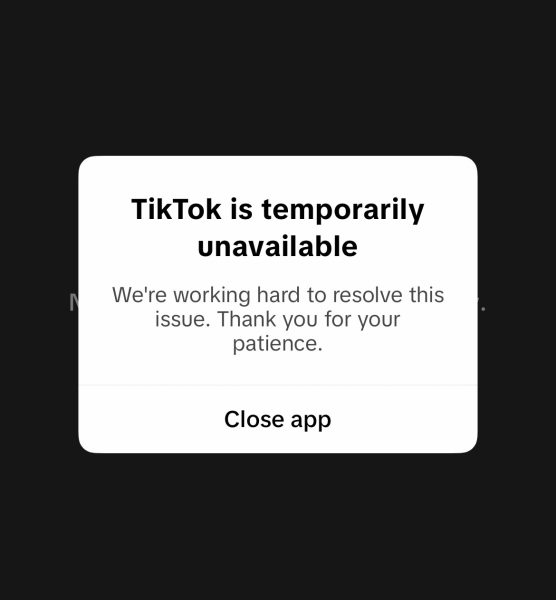Mid-Pacific keeps students informed electronically
Derrick Kang, director of college counseling and senior Kama Higa hangs Higa’s tie-dye shirt at senior camp. Camp was an event primarily communicated about online.
By Kamm Kojima
Staff Writer
During the 2021-2022 school year information about school events, accomplishments and health updates informed more than 500 high schoolers. Communication through newsletters, meetings, or on MyPueo is ideal when living a school and work life.
“People have lives outside of school that we have to plan around certain events and things like that, where when you don’t know what’s happening at school you can’t plan what’s happening at home,” said senior Jasper Ho.
Dean’s newsletters, weekly health reports, high school newsletters, during class meetings, and email, are some ways that information is sent out to students. Other ways are through teachers.
“Our main sources of information are our teachers and sometimes our principals,” said Senior Education committee representative, Julian Ibarra.
Receiving certain information from teachers students also heavily rely on word of mouth.
“I usually hear it through other friends and teachers,” said junior Riko Santos.
However, without reading the direct message information may not be accurate.
“For me, I hear it from other people so words could be twisted,” said Santos.
Students don’t prefer to read a message as it is time consuming.
“I don’t really read the dean’s message because it comes out quite often and usually it’s the same thing,” Santos said.
The administration understands that students don’t fully read emails so they try to keep their messages to a minimum when possible.
“I tried to be selective about how much information I send out because if you send out too, people will be overloaded and they won’t read it,” said High School Principal, Dr. Dee Priester.
Noticing flaws in how announcements are reported under Priester’s administration, the idea of sending messages through student’s iPads is under discussion.
“How can we use text as an effective means of communication as opposed to email, so hopefully in the next year or so we will have figured it out,” said Preister.
However, COVID-19 does influence and limit in-person meetings which limits students’ attention spans.
“Under normal circumstances we would have a chapel, we would have it live. It’s the face to face communication, it’s the short bite size chunks that people are more likely to grab hold of,” said Preister.
Despite how information is sent out be it electronically or face to face Mid-Pacific aims for more transparency. In hopes of involving the students in decisions, an Education Committee representative was appointed.
“My job is to take basically what is said at this meeting and then funnel it into a summary document and then share it back out with students,” said Ibarra.
Working with decision makers Ibarra notes that occasionally information is not told for a reason.
“Making sure that things are still moving on, sometimes that means there are going to be things that can’t be said,” said Ibarra.
No matter how information is told, communication that strives are close relationships with their teachers.
“I have a really close relationship with a lot of my teachers and it was definitely nice to know that there was somebody there, who would be ready to listen when we were having issues,” said senior Nicole Nafarrete.
Recognizing that communication at Mid-Pacific is not perfect, Preister works on improving it while using the resources he can utilize.
“It’s not as successful as I would like, but it’s us working in the parameters that we have,” said Preister.






